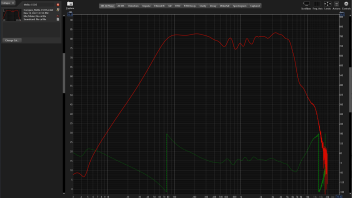There are a few ways to convert the CAB:
1. The method you mention above sends an IMPULSE thru the Kemper and you record what comes out the other side.
2. You download ROOM EQ WIZARD and you do a frequency sweep of the CAB and convert that sweep into an IR.
Both methods work but require some software and knowledge to get thru.
Room EQ Wizard (REW) is the easier method.
REW METHOD
1. Connect the Kemper input and outputs to your sound card.
SC Out -> Kemper In
Kemper Out -> SC In
2. Open REW and in preferences select the correct Inputs/Outputs. Close the dialog.
3. Click MEASURE on main menu and Continue anyway if asked about calibration.
4. Click START.
5. After the sweep is done you will be shown the freq response of the CAB. Select EXPORT IMPULSE RESPONSE AS WAV.
You now have the IR, however, it is not in a usable format. You need to do some editing.
1. Download GOLDWAVE audio editor or use the editor of your choice.
2. Open the WAV file and trim off the extra space around the IR. You will want the IR to be a little bigger than 2048 samples.
STUFF TO KNOW
1. You may want your sound card in the correct mode that you want the IR to be in. ie 44.1 kHz or 48 kHz. The Kemper is always in 44.1 I believe, so you should be there already. This is not 100% necessary as you can pick the sampling rate in REW when you export.
2. IRs are 1024 or 2048 samples long. You want the IR to start as soon as possible or you are adding LAG. So manually editing the IR is your best bet.
At 44.1kHz you will want a minimum of (1024/44.1)=23.22 mS of audio for 1024 samples.
At 44.1kHz you will want a minimum of (2048/44.1)= 46.44mS of audio for 2048 samples.
3. You can play around in REW to see if you can set it up to trim off the extra space around the IR. There are some settings to try. But some times the IR will have oscillations before the actual pulse that you may want to trim off. And if you edit it manually you will learn what is going on more.
4. Normalize the IR. This means make the IR as loud as possible. This can be done in REW when you export or in your audio editor.
IRs are normally a large peaking pulse followed by oscillations. If you edit the IR and the phase gets destroyed, the IR may lose its peaky pulse and become a blob of oscillations. If normalized this blob will be 3-6 dB louder than the original IR.
5. Once you have the IR in wave format, you can apply some EQ to it if needed. Depending on the EQ code being used, you may destroy the phase response of the IR. So your milage may vary.
6. Some IRs are louder than others.
The entire IR is multiplied times every sample of your guitar playing. IRs that adjust low freqs will have a large negative spike right after the large positive spike. This negative spike will make the IR quieter since you are removing some of the overall volume. That is completely normal and part of how it is supposed to work.
EXPERIMENT
You now have the means to measure IRs for anything. Speakers, other units, etc. In fact I wrote a program to let me draw the freq response and then I use REW to convert it to an IR (need to generate minimum phase response first).
For speakers just use a microphone instead of the Kemper Out -> SC In.
I got a cheap Chinese class D amp off Amazon and I have swept ALL of my speakers. Seeing the REW freq response will also teach you about proper micing techniques. Since you will see bad resonances and suck outs from the room, other speakers, etc.

EXAMPLE FREQUENCY SWEEP
Your Kemper sweep should look like this. The RED line is the freq response. The GREEN line is the phase. The phase normally has an instant change at the speakers resonance. Usually around 75 Hz for 12" speakers. The phase should not change phase everywhere. Normally around 75Hz and then again at a higher freq. If your micing technique is bad, there will be phase changes all over the place and the freq will have large dips as well.
You dont need to know any of this for the IR conversion. Just hints to let you know you are the right track.

IR EXAMPLE
1. The image on the left is what an IR test pulse is. A single sample at full loudness in a WAVE file.
2. Once that pulse goes thru your Kemper, you get a smoothed out oscillating thing (Right image).
3. If you dont trim off the beginning of the IR (PINK) you are adding lag and altering the low freq response of the IR.
